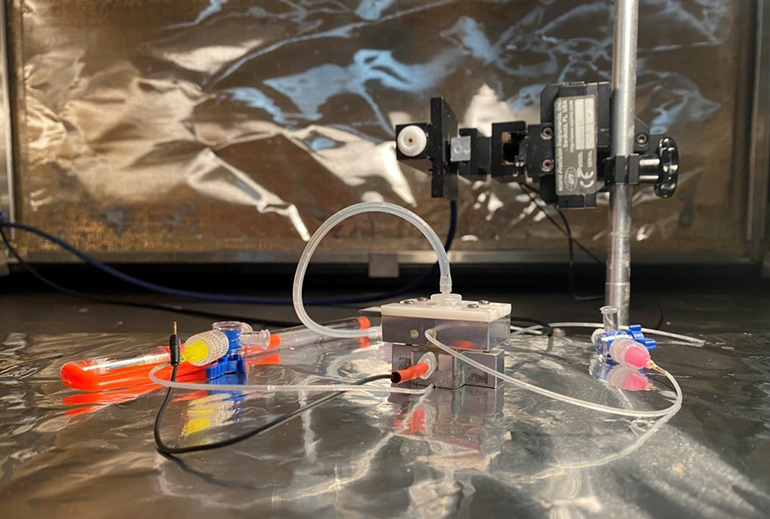Researchers at the University of Arkansas have developed a nanopore sensor to study the aggregation of tau and tubulin protein molecules. These proteins, and specifically their aggregation in the brain, are implicated in neurodegenerative diseases such as Parkinson’s and Alzheimer’s. This nanopore technology aims to allow researchers to study the effects of different environmental conditions, including pH, salt concentration, and temperature, on how these proteins aggregate. The researchers hope that their advancement can help to understand the underlying mechanisms of neurodegenerative diseases and potentially identify new opportunities for treatment.
An accumulation of tiny protein tangles in the brain are a hallmark of neurodegenerative diseases such as Parkinson’s and Alzheimer’s. However, their formation and role in disease initiation and progression are not completely understood. Understanding how and why these tangles form could permit researchers to develop new treatments that target these processes.
This latest technology aims to characterize these protein tangles and their behavior. This involved creating a nanopore sensor in a silicon nitride membrane. The technology involves creating a flow of ions through the nanopore using an electric voltage and then analyzing how charged protein molecules affect the current.
“Ohm’s Law is the basic physics that enables the nanopore device to sense protein molecules,” said Jiali Li, a researcher involved in the study. “A tiny hole — from 6 to 30 nanometers — is made in a thin silicon nitride membrane and supported by a silicon substrate. When that is placed into a solution with salt ions, applying an electric voltage drives the ions’ flow through the hole, or nanopore. This, in turn, generates an open pore ionic current.”
These changes in current can reveal properties of the protein tangles, such as volume, shape, and size, and this can assist the researchers in understanding how the tangles form and behave. “The amount of current drop produced by a protein molecule is proportional to the protein’s volume or size and shape,” said Li. “This implies that if protein A binds to protein B, they will cause a current drop proportional to the volume of A +B, and an aggregated protein A will cause approximately multiple amounts of current drop.”
“Our study shows that a silicon nitride nanopore device can measure volume information of tau and tubulin protein molecules and their aggregation under different biological conditions, and this gives us a better understanding of the protein aggregation process, as well as developing drugs or other therapeutic methods to treat neurodegenerative diseases,” said Li. “We plan to study the mechanism of protein aggregation under different biological conditions, such as temperature, pH, and salt concentration.”
Study in Journal of Applied Physics: Tau and tubulin protein aggregation characterization by solid-state nanopore method and atomic force microscopy
